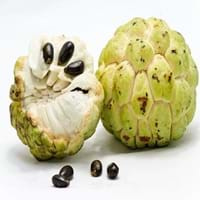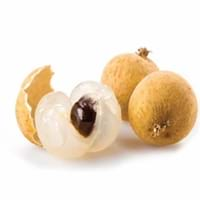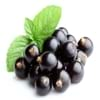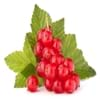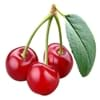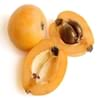Health Benefits
Cancer prevention, Heart care, Regulation of heart rate
Anti depressant, Anti-inflammatory properties, Healthy mucus membrane, prevents oral cavity cancer, Prevents anemia, Prevents cases of morning sickness, Prevents lung cancer, Skin rejuvenation, Treatment of colonic diseases
General Benefits
Anti oxidant properties, Anti-inflammatory properties, Boosts immune system, Controls blood pressure, Digestive aid, Strengthens bones
Anti oxidant properties, Anti-inflammatory properties, Digestive aid, Gives you energy, Suppresses Arthritis
Skin Benefits
Reduces wrinkles, Skin rejuvenation
Reduces wrinkles, Skin rejuvenation
Hair Benefits
Promotes longer and healthier hair, Treatment of dandruff, Treatment of Lice
Not Available
Allergy Symptoms
Anaphylaxis, Itching, Skin rash, Swelling of face
Itching, Swelling of mouth, tongue or lips, Tingling sensation in mouth
Side Effects
Allergic reaction, Possibly unsafe during pregnancy
Mouth irritation, Weight gain
Best Time to Eat
As a snack in the late afternoon, Don't consume at night and before bed, Morning time (before lunch)
As a snack in the late afternoon
Vitamin A (Retinol)
Not Available
Vitamin B5 (Pantothenic Acid)
Vitamin C (Ascorbic Acid)
Vitamin E (Tocopherole)
Not Available
Lutein+Zeaxanthin
Not Available
Calories in Fresh Fruit with Peel
Not Available
Calories in Fresh Fruit without Peel
Not Available
Calories in Frozen Form
Not Available
Not Available
Calories in Dried Form
Not Available
Not Available
Calories in Canned Form
Not Available
Not Available
Calories in Juice
Not Available
Calories in Pie
Not Available
Type
Tropical
Tree fruit, Tropical
Season
Autumn, Spring, Winter
Mid to late summer
Varieties
Andrews, Amarilla, Asca, Baste, Bays, Bayott, Behl, Canaria, Capucha, Deliciosa, Ecuador, El Bumpo, Guayacuyán, Jete, Juniana, Knight, Nata, Popocay, Sander, Smoothey, Tumba, Umbonada, Whaley and White Juliana
Chompoo Longan, Kohala Seedling, Haew, Edau and Biew Kiew
Seedless Variety
No
Not Available
Color
Green, Yellow
Rusty brown
Inside Color
White
Yellowish brown
Soil Type
Sandy loam
Well-drained
Climatic Conditions
Warm
Sunny, Warm, Without frosts
Facts about
- Cherimoya is also called as custard apple or chirimoya.
- The word cherimoya came from the Quechua word,'chirimuya',which means 'cold seeds'.
- The cherimoya is called as 'the tree of ice cream'.
- Longan is also called as "Dragon's eye" in China as it gives an impression of an eyeball.
- Longan seeds can be used to absorb the venom after the snake bite and they also help to stop bleeding.
Top Producer
Spain
Thailand
Other Countries
Argentina, Chile, Colombia, Egypt, Italy, Mexico, Peru, South Africa, United States of America
Australia, Combodia, Taiwan, United States of America, Vietnam
Top Importer
United States of America
China
Top Exporter
Spain
Thailand
Botanical Name
Annona cherimola
Dimocarpus longan
Synonym
Not Available
Dragon eye
Subkingdom
Tracheobionta
Viridiplantae
Division
Magnoliophyta
Tracheophyta
Class
Magnoliopsida
Magnoliopsida
Subclass
Magnollidae
Rosidae
Order
Magnoliales
Sapindales
Family
Annonaceae
Sapindaceae
Species
A. cherimola
D. longan
Generic Group
Not Available
Not Available
Difference Between Cherimoya and Longan
We might think that Cherimoya and Longan are similar with respect to nutritional value and health benefits. But the nutrient content of both fruits is different. Cherimoya and Longan Facts such as their taste, shape, color, and size are also distinct. The difference between Cherimoya and Longan is explained here.
The amount of calories in 100 gm of fresh Cherimoya and Longan with peel is Not Available and 83.00 kcal and the amount of calories without peel is 75.00 kcal and Not Available respectively. Thus, Cherimoya and Longan belong to and category.These fruits might or might not differ with respect to their scientific classification. The order of Cherimoya and Longan is Magnoliales and Sapindales respectively. Cherimoya belongs to Annonaceae family and Longan belongs to Sapindaceae family. Cherimoya belongs to Annona genus of A. cherimola species and Longan belongs to Dimocarpus genus of D. longan species. Beings plants, both fruits belong to Plantae Kingdom.
